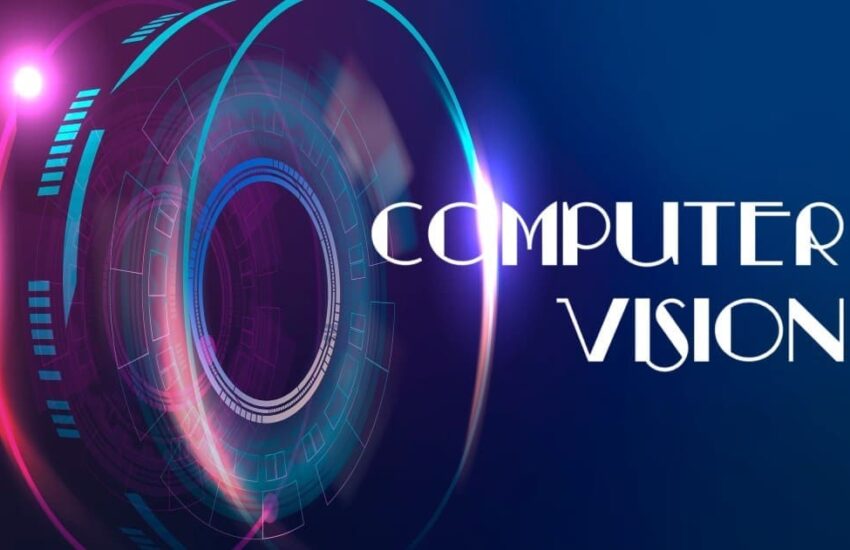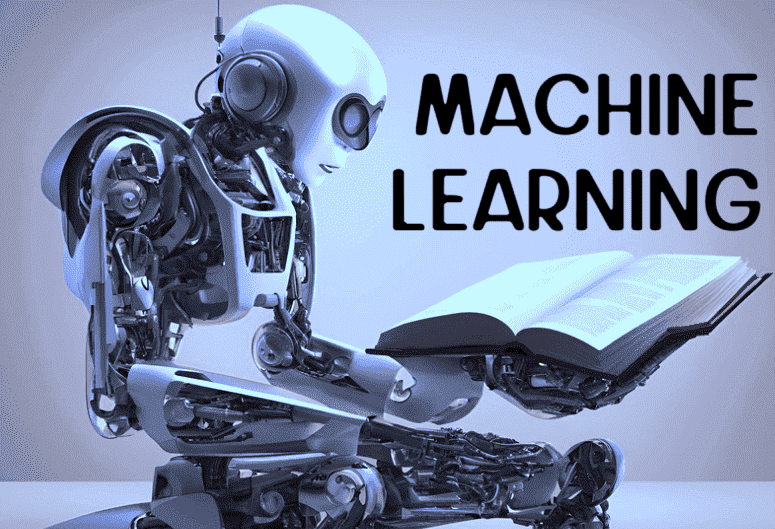
Overview:
In the evolving landscape of decentralized technologies, Decentralized Autonomous Organizations (DAOs) stand out as innovative models of organizational governance. These entities, powered by blockchain technology and smart contracts, promise a future where decision-making is transparent, automated, and decentralized. DAOs represent a departure from traditional hierarchical structures, enabling participants worldwide to collaborate and govern collectively without intermediaries. However, alongside their potential to revolutionize industries and empower communities, DAOs face formidable challenges that threaten their adoption and sustainability.
From regulatory uncertainties to security vulnerabilities and complex governance dynamics, DAOs must navigate a myriad of obstacles to realize their full potential. Addressing these challenges requires not only technological advancements and robust security measures but also regulatory clarity, effective governance frameworks, and improved user experiences. This article explores the key challenges confronting DAOs today and examines the strategies and innovations needed to overcome them, paving the way for a future where decentralized autonomous organizations thrive at the forefront of global innovation and collaboration.
Contents:
- What is Decentralized Autonomous Organization (DAO)
- The key components of Decentralized Autonomous Organization (DAO)
- The key application areas of Decentralized Autonomous Organization (DAO)
- The key trends of Decentralized Autonomous Organization (DAO)
- The key factors driving the adoption of Decentralized Autonomous Organization (DAO)
- The top benefits of Decentralized Autonomous Organization (DAO)
- The top challenges with Decentralized Autonomous Organization (DAO)
- Summing Up
So, what is a Decentralized Autonomous Organization (DAO):
A Decentralized Autonomous Organization (DAO) functions via rules implemented as smart contracts on a blockchain, rather than traditional hierarchical management. Think of a DAO as a digital entity governed by its predefined rules, free from central authority. It operates online using smart contracts—essentially digital agreements that automatically enforce actions based on predefined conditions.
The key components of Decentralized Autonomous Organization (DAO):
1. Smart Contracts:
These are self-executing contracts with the terms of the agreement directly written in code. In a DAO, smart contracts define the rules, operations, and conditions under which the organization functions. For example, they might determine how funds are managed, how voting works, and how proposals are approved.
2. Governance Mechanisms:
DAOs use decentralized governance mechanisms to manage decision-making processes. This often involves token holders voting on proposals and changes within the organization. Voting power is usually proportional to the number of tokens held by each participant.
3. Tokenomics:
Tokens within a DAO often serve multiple purposes. They can represent ownership, voting rights, and sometimes even a form of currency within the DAO ecosystem. Tokenomics refers to the economic model and incentives designed around these tokens.
4. Decentralized Storage and Communication:
DAOs may utilize decentralized storage solutions (like IPFS) and communication protocols (like Whisper or other messaging protocols) to ensure data and communications are secure, private, and resistant to censorship.
5. Community and Participation:
A strong DAO thrives on active participation from its community members. This includes proposing ideas, voting on proposals, contributing to projects, and generally engaging in discussions about the DAO’s direction and activities.
6. Transparency and Auditability:
DAO operations are transparent due to the public nature of blockchain technology. All transactions, proposals, votes, and decisions are recorded on the blockchain, ensuring accountability and auditability.
7. Security Measures:
Given the digital and decentralized nature of DAOs, robust security measures are essential to protect against hacks, exploits, and other vulnerabilities. Audits of smart contracts, secure coding practices, and community vigilance are crucial components of DAO security.
The key application areas of Decentralized Autonomous Organization (DAO):
1. Finance:
Lending and Borrowing: DAOs enable peer-to-peer lending and borrowing without intermediaries, using smart contracts for automated loan agreements.
Asset Management: DAOs manage pooled funds and investments through collective decision-making on asset allocation and trading strategies.
Decentralized Exchanges (DEXs): DAO-operated DEXs facilitate decentralized trading of cryptocurrencies and assets, governed by token holders.
2. Governance:
Blockchain Networks: DAOs govern blockchain protocols and networks, with token holders voting on upgrades, protocol parameters, and funding for development.
Online Communities: DAOs manage online communities, where members propose and vote on community initiatives, content policies, and fund allocations.
3. Content Creation and IP:
Content Platforms: DAOs empower creators with ownership and direct payments from consumers, bypassing traditional platforms.
Intellectual Property: DAOs manage ownership rights, royalties, and licensing for digital content, ensuring fair revenue distribution.
4. Supply Chain and Logistics:
Traceability: DAOs track supply chain transactions, ensuring product authenticity and compliance with regulations.
Logistics: DAOs optimize logistics through decentralized coordination of shipping routes, inventory management, and supplier relationships.
5. Public Services:
Decentralized Governance: DAOs facilitate decentralized decision-making in public services, such as urban planning and resource allocation.
Identity Management: DAOs manage secure digital identities and verifiable credentials for citizens and healthcare records.
6. Gaming:
Virtual Assets: DAOs manage virtual economies within gaming platforms, enabling ownership and trading of in-game items.
Community Governance: DAOs govern gaming communities, where players collectively decide on game rules and community events.
7. Digital Arts:
Digital Art: DAOs support digital artists with ownership rights and provenance for digital artworks.
Collectibles: DAOs facilitate trading and management of digital collectibles, ensuring transparency and ownership validation.
The key trends of Decentralized Autonomous Organization (DAO):
1. Expansion in DeFi (Decentralized Finance):
Automated Financial Services: DAOs are increasingly involved in providing automated financial services such as lending, borrowing, yield farming, and decentralized exchanges (DEXs). These services operate without intermediaries, leveraging smart contracts for efficiency and transparency.
2. Enhanced Governance Mechanisms:
Governance Enhancements: DAOs are evolving with more sophisticated governance mechanisms, including quadratic voting, delegated voting, and improvement proposals (IPs). These mechanisms aim to improve decision-making processes and community participation.
3. Interoperability and Integration:
Cross-Chain DAOs: With the rise of interoperability protocols and cross-chain solutions, DAOs are exploring ways to operate across multiple blockchain networks. This allows for broader participation and access to diverse ecosystems.
4. DAO-as-a-Service (DAOaaS):
Platform Solutions: DAOaaS platforms are emerging to simplify the creation and management of DAOs. These platforms offer templates, tools, and infrastructure for launching DAOs, lowering barriers to entry and fostering innovation in governance models.
5. Incentivization Mechanisms:
Tokenomics Innovations: DAOs are experimenting with novel tokenomics models to incentivize participation, governance activities, and contributions. Examples include liquidity mining, staking rewards, and governance token distributions.
6. Decentralized Autonomous Ecosystems:
Holistic Ecosystems: DAOs are forming interconnected ecosystems where multiple DAOs collaborate or interact. This trend facilitates synergies between different projects, enhances network effects, and fosters shared resources and expertise.
7. Higher Adoption of DAOs:
Global Adoption: DAOs are gaining traction in emerging markets where traditional financial infrastructure may be lacking. They offer alternative financial services, access to global markets, and opportunities for economic participation.
8. Focus on Sustainability and Social Impact:
Social DAOs: There is a growing trend towards DAOs focused on sustainability, social impact, and community-driven initiatives. These DAOs aim to address environmental challenges, promote fair trade practices, and support social causes.
9. Security and Auditing Standards:
Security Best Practices: Given the inherent risks in decentralized systems, there is an emphasis on improving security measures, conducting rigorous audits of smart contracts, and implementing robust governance mechanisms to mitigate risks.
10. Regulatory Considerations:
Regulatory Frameworks: As DAOs gain prominence, there is increasing dialogue around regulatory frameworks to ensure compliance, protect investors, and foster innovation while maintaining regulatory clarity and stability.
The key factors driving the adoption of Decentralized Autonomous Organization (DAO):
1. Decentralization and Trustlessness:
DAOs operate on decentralized blockchain networks, which provide transparency, immutability, and security. This decentralized nature reduces reliance on traditional centralized institutions and intermediaries, thereby increasing trust among participants.
2. Efficiency and Cost Savings:
DAOs automate processes through smart contracts, reducing operational overhead and eliminating the need for intermediaries. This efficiency can lead to cost savings, faster transactions, and streamlined operations compared to traditional organizational structures.
3. Global Access and Inclusivity:
DAOs enable global participation without geographical barriers. Anyone with an internet connection can join and contribute to DAOs, promoting inclusivity and democratizing access to financial services, governance, and decision-making processes.
4. Innovative Governance Models:
DAOs offer novel governance mechanisms where decisions are made collectively by token holders based on voting rights. This model fosters community-driven initiatives, consensus-building, and transparent decision-making, which can lead to more responsive and adaptive organizations.
5. Tokenization and Incentives:
DAOs often issue tokens that represent ownership, voting rights, or participation in the ecosystem. These tokens can incentivize stakeholders to actively contribute to the DAO’s success through rewards, governance rights, and economic benefits, driving engagement and commitment.
6. Emerging Technologies and Infrastructure:
Advancements in blockchain technology, smart contracts, and decentralized finance (DeFi) platforms provide robust infrastructure for DAOs to operate securely and efficiently. This technological progress lowers barriers to entry and encourages experimentation and innovation in DAO development.
7. Community and Collaboration:
DAOs foster communities of like-minded individuals who share common goals and interests. These communities can collaborate on projects, share resources, and collectively solve problems, leveraging the collective intelligence and creativity of diverse participants.
8. Economic and Social Impact:
DAOs have the potential to disrupt traditional industries by offering alternative financial systems, promoting fairer distribution of resources, and supporting social impact initiatives. This can attract individuals and organizations seeking to make a positive difference through decentralized and community-driven approaches.
9. Regulatory Environment:
While regulatory frameworks are still evolving, some jurisdictions are exploring ways to accommodate DAOs within existing legal frameworks. Clarity in regulations can provide certainty to participants and investors, encouraging broader adoption and investment in DAOs.
The top benefits of Decentralized Autonomous Organization (DAO):
1. Decentralization:
DAOs eliminate central points of control, distributing authority and decision-making across a network of participants. This reduces the risk of single points of failure and enhances the resilience of the organization.
2. Transparency:
All transactions and decisions within a DAO are recorded on a blockchain, making them transparent and auditable. This transparency builds trust among participants and ensures that actions are traceable and verifiable.
3. Efficiency and Automation:
DAOs leverage smart contracts to automate processes and enforce rules without human intervention. This automation reduces administrative overhead, accelerates decision-making, and minimizes the risk of errors and fraud.
4. Lower Costs:
By removing intermediaries and reducing the need for traditional governance structures, DAOs can significantly lower operational costs. This can lead to more efficient resource allocation and higher profitability.
5. Global Accessibility:
DAOs are accessible to anyone with an internet connection, enabling global participation. This inclusivity allows diverse communities to collaborate and contribute, regardless of their geographical location.
6. Incentivization and Participation:
DAOs often use tokens to incentivize participation and contributions. Token holders can earn rewards for their involvement in governance, development, and other activities, aligning individual incentives with the success of the DAO.
7. Innovation and Agility:
The decentralized nature of DAOs fosters innovation by enabling rapid experimentation and iteration. DAOs can quickly adapt to changing circumstances and new opportunities without the bureaucratic constraints of traditional organizations.
8. Enhanced Security:
The use of blockchain technology and cryptographic security measures makes DAOs inherently secure. Smart contracts are resistant to tampering and hacking, providing a high level of security for transactions and data.
9. Democratic Governance:
DAOs empower participants with voting rights proportional to their token holdings, promoting a more democratic and inclusive decision-making process. This ensures that the voice of each member is heard and considered in the governance of the organization.
10. Community Building:
DAOs foster strong communities by aligning interests and goals among participants. This sense of shared purpose and collaboration can enhance member engagement, loyalty, and collective action towards common objectives.
11. Token-Based Economy:
DAOs create a token-based economy where tokens can be used for various purposes, such as governance, staking, rewards, and transaction fees. This ecosystem promotes liquidity, trading, and the development of new economic models.
12. Scalability:
The modular and open nature of DAOs allows them to scale easily by integrating with other projects and platforms. This scalability enhances their ability to expand and grow without the limitations of traditional organizational structures.
The top challenges with Decentralized Autonomous Organization (DAO):
1. Regulatory Uncertainty:
DAOs operate in a regulatory landscape that is still evolving and varies greatly across jurisdictions. Unclear or inconsistent regulations regarding cryptocurrencies, tokenomics, governance structures, and liability can create barriers to adoption and growth.
2. Security Vulnerabilities:
Smart contracts, which form the backbone of DAO operations, are susceptible to bugs, vulnerabilities, and exploits. These vulnerabilities can lead to financial losses, theft of assets, and damage to the DAO’s reputation. Regular audits and robust security protocols are essential but can be costly and time-consuming.
3. Governance Challenges:
While DAOs aim to enable decentralized decision-making, effective governance remains a significant challenge. Issues such as voter apathy, low voter turnout, plutocracy (where wealthy token holders wield disproportionate influence), and governance paralysis due to disagreements can hinder decision-making processes.
4. Scalability Issues:
As DAOs grow in size and complexity, scalability becomes a concern. Blockchain networks may face congestion, high transaction costs, and limitations in processing capacity. Scaling solutions such as layer 2 solutions (like sidechains or rollups) and interoperability protocols are being developed but are still in their early stages.
5. User Experience (UX):
Interacting with DAOs can be complex and intimidating for users who are unfamiliar with blockchain technology and decentralized governance. Improving UX design, creating intuitive interfaces, and providing user-friendly documentation and support are critical to increasing adoption and engagement.
6. Tokenomics and Economic Stability:
The economic model of DAOs, including token distribution, inflation mechanisms, and token utility, can impact the stability and sustainability of the organization. Poorly designed tokenomics may lead to volatility, speculation, and disincentives for long-term participation.
7. Legal and Compliance Risks:
DAOs must navigate legal challenges related to taxation, intellectual property rights, contract enforceability, and compliance with anti-money laundering (AML) and know-your-customer (KYC) regulations. Ensuring legal compliance while maintaining decentralization and anonymity poses significant challenges.
8. Centralization Risks:
Despite aiming for decentralization, DAOs may face risks of centralization over time. Concentration of voting power among a few large token holders, influence of external entities, or the dominance of a particular development team can undermine the DAO’s decentralized principles.
9. Social and Governance Experimentation:
DAOs are still in the experimental stage regarding governance models, economic incentives, and community dynamics. Balancing innovation with stability and predictability is crucial to the long-term success of DAO projects.
10. Perception and Reputation:
DAOs have been associated with high-profile incidents of hacks, scams, and governance failures, which can damage trust and credibility. Building a positive reputation through transparency, accountability, and community engagement is essential for sustainable growth.
Summing Up:
Decentralized Autonomous Organizations (DAOs) represent a groundbreaking approach to organizational governance and operations, leveraging blockchain technology to enable transparent, autonomous decision-making. However, their widespread adoption is hindered by several challenges. These include regulatory uncertainties across jurisdictions, security vulnerabilities in smart contracts, governance complexities such as voter apathy and scalability issues in blockchain networks.
User experience and tokenomics also pose significant hurdles, alongside legal compliance risks and the perpetual balancing act between decentralization and effective governance. Overcoming these challenges requires concerted efforts in technological innovation, regulatory clarity, improved security practices, and fostering user-friendly interfaces. DAOs hold immense potential to reshape industries and empower communities, but navigating these obstacles is crucial to their sustainable growth and mainstream acceptance.











